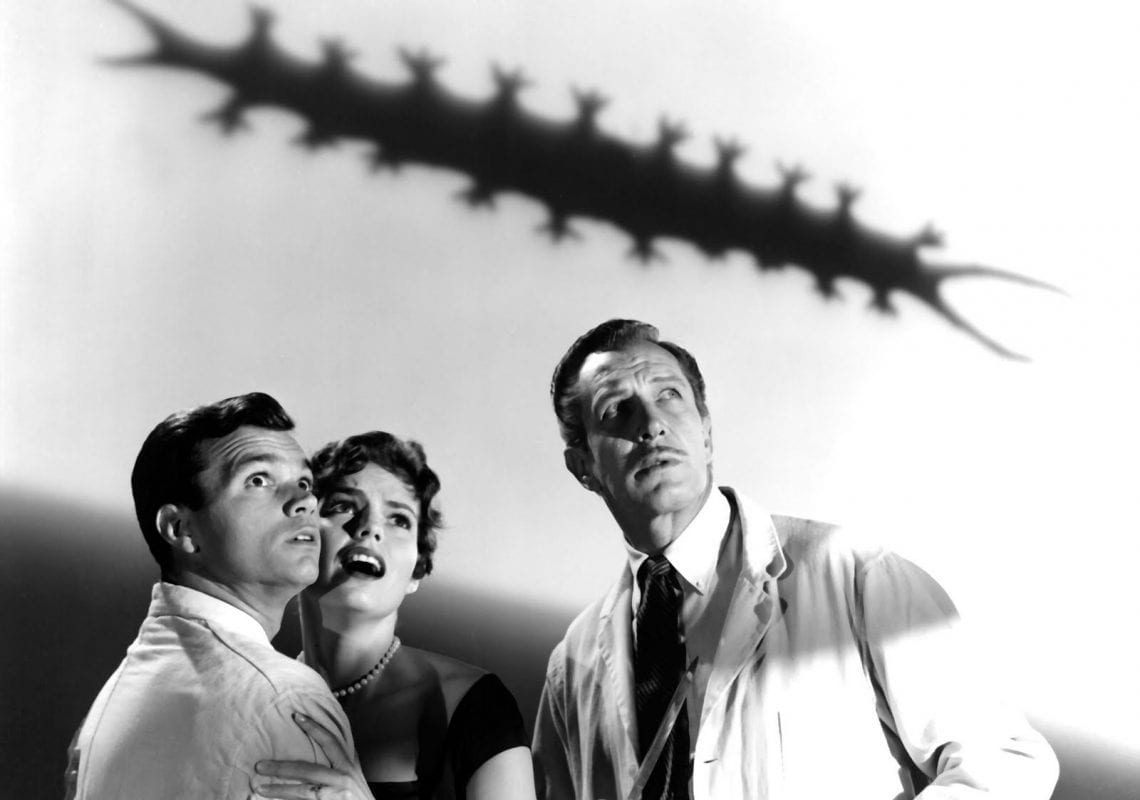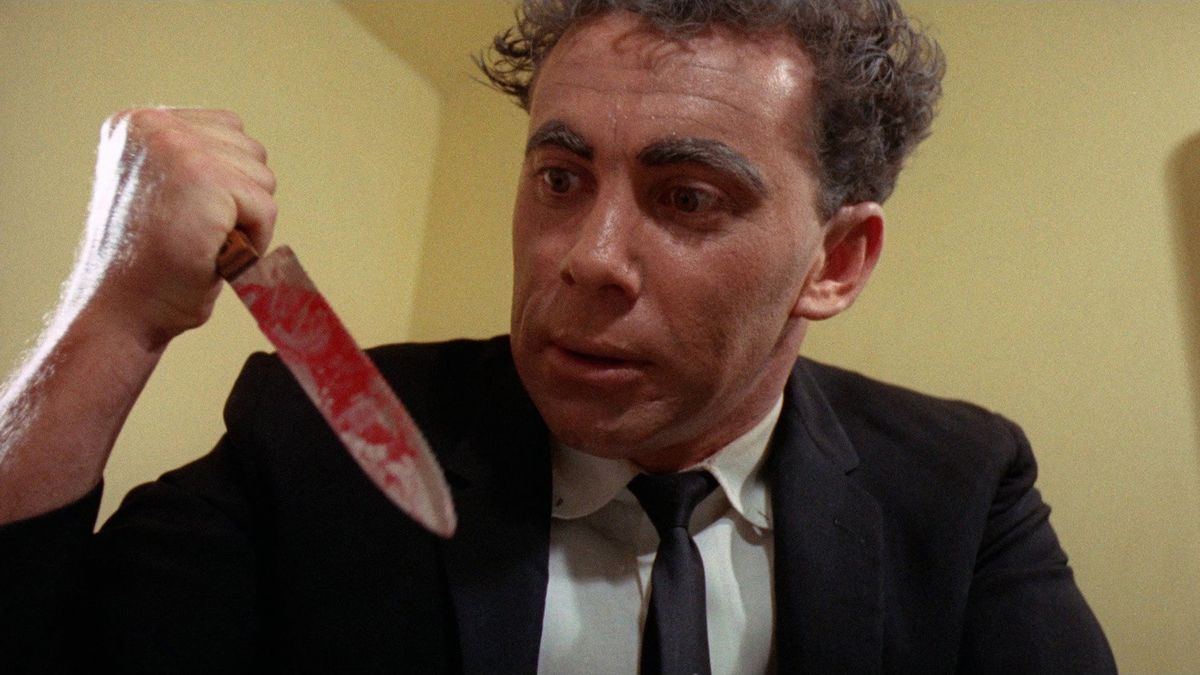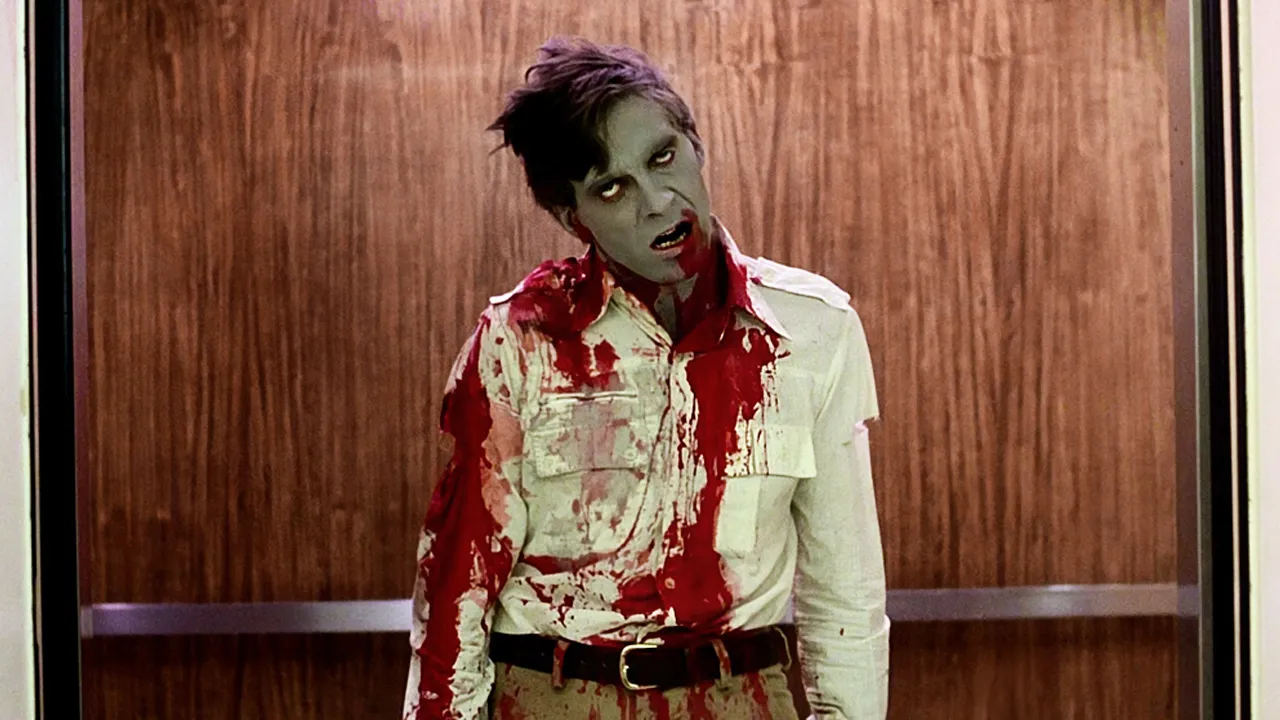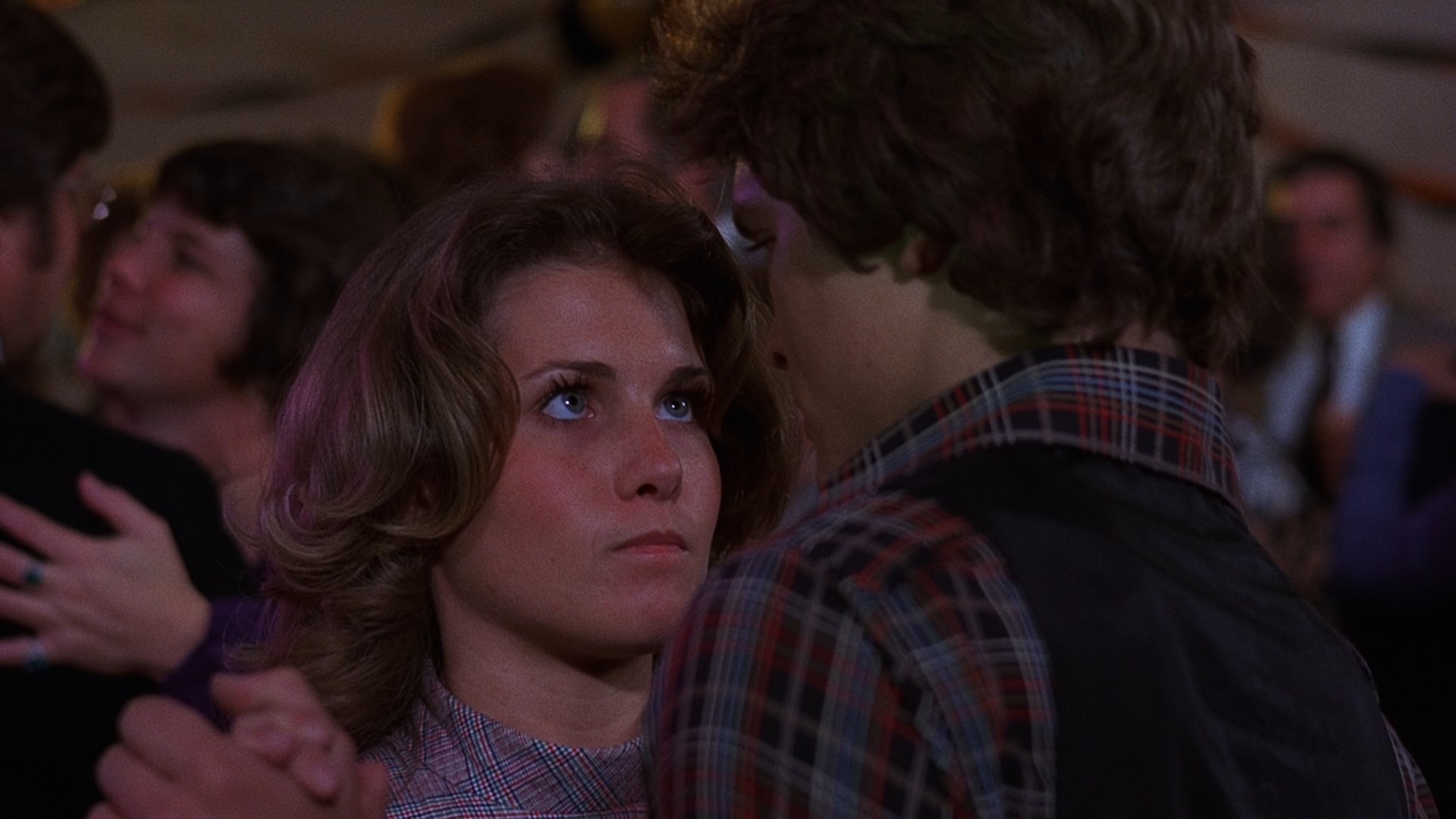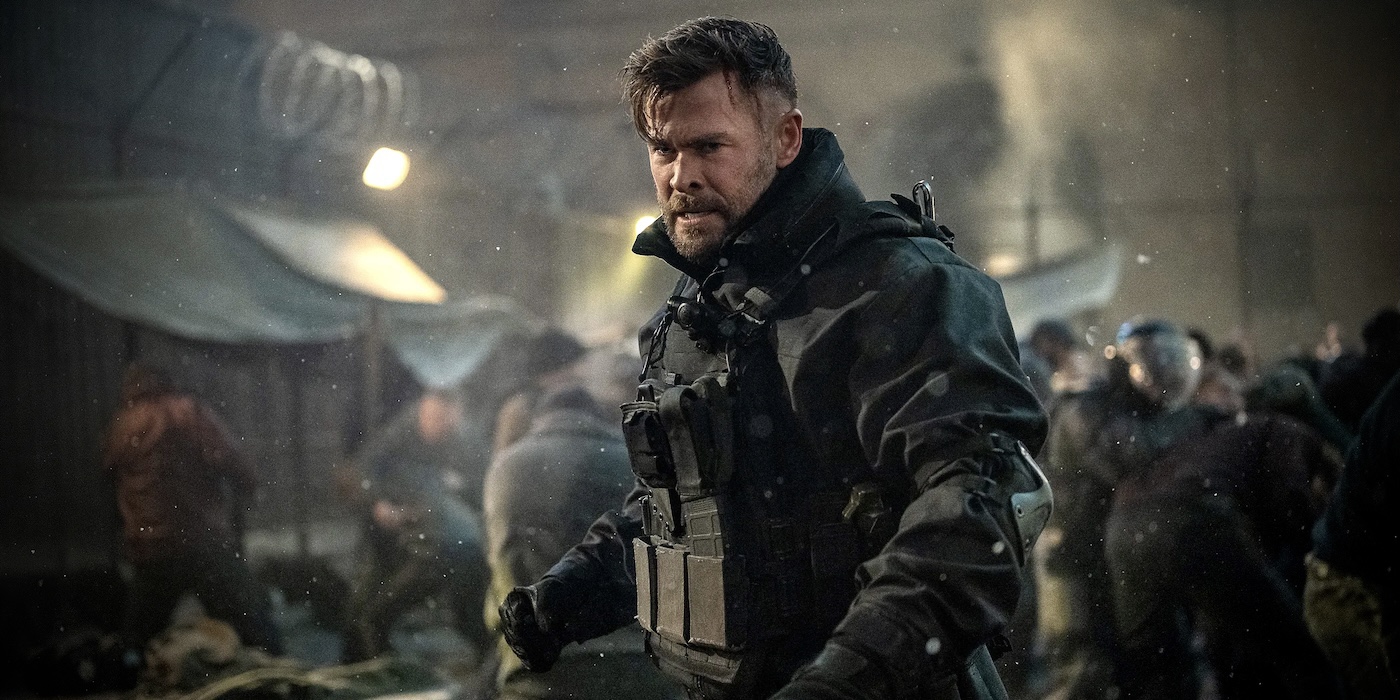All Guts, All Gory – The DNA of ‘Evil Dead’
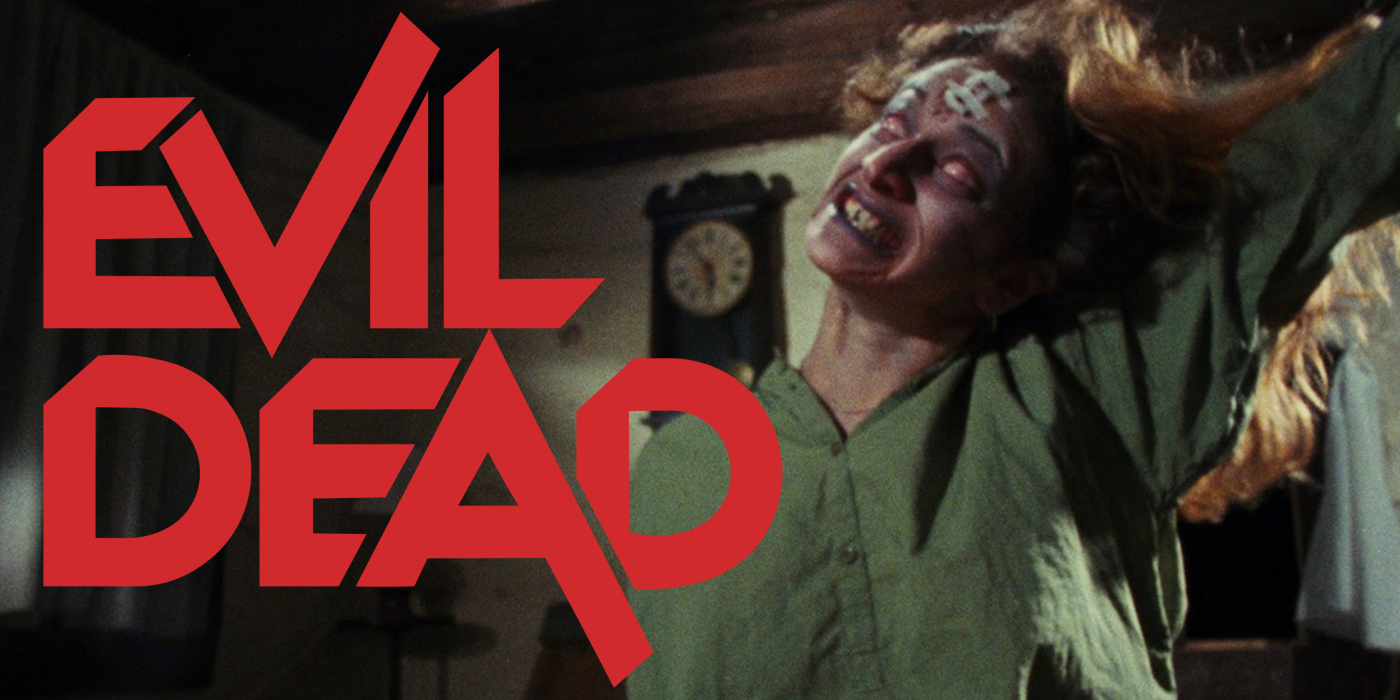
With Evil Dead Rise nearly in theaters, let’s pull out the microscope and understand the films and filmmakers that make Evil Dead possible.
The Evil Dead is a landmark horror film. Sam Raimi’s gonzo filmmaking is equal parts dizzying and unnerving. The copious use of blood and viscera set the bar for an entire decade of horror. And Bruce Campbell, the hardest working man in the B-movie business, sets a gold standard in physical performance.
But a franchise like Evil Dead doesn’t come from nowhere. Director Sam Raimi, producer Bob Tapert, and lead actor Bruce Campbell didn’t invent the low-budget gorefest–they merely perfected it. Decades worth of storytellers excavated the darkest sides of humanity’s domain before the Book of the Dead was discovered.
So let’s single out some of the creators and creations that set the stage and made Evil Dead possible.
Where Evil Dead Gets Its Gimmick
There are many potential starting places to explain how The Evil Dead happens, but let’s start in 1927. There’s a kid watching a stage production of Dracula starring Bela Lugosi. The kid sidles up to Lugosi after the show complimenting the performance and somehow lands the gig of assistant stage manager for the show’s road tour.
The kid dreams that one day he’ll scare the pants off of audiences himself. And he grows up to be horror auteur William Castle.
Castle is mostly known for horror with a gimmick. House on Haunted Hill features an in-theater flying skeleton. 13 Ghosts utilizes “Illusion-O vision” so audiences can choose to see the ghosts or not. And Homicidal even has a “Coward’s Corner” for audience members too scared to watch the film’s ending.
While Castle uses plenty of gruesome makeup effects across his filmography, the Evil Dead inspiring gore comes from the 1959 classic The Tingler. The Tingler is about a scientist who discovers a parasite in the human body responsible for the spine-tingling sensation people have when they are afraid.
And relevant to our interests is the death of Martha Higgins. She dies from fright after being subjected to a number of horrific visuals.
Since The Tingler is a black-and-white feature, Castle utilizes color in this sequence as the gimmick. When Higgins hides in the bathroom she discovers red blood pouring out of the sink. And looking into the tub she discovers a mutilated hand stretching out from a pool of viscous blood. The sight is so horrifying, it literally scares her to death.
The Tingler is goofy but it also sets up this idea that blood-red gore is an effective way to scare an audience into the theater.
A Feast of Blood
The 1960s are a filmmaking era constantly seeking a workaround. And the late ’50s offer a bit of that in the form of roughies–low-budget, exploitation films with an intention to titillate. Filmmaker Herschell Gordon Lewis first makes his mark with his producing partner David F. Friedman there. The pair make nudie cuties. Specifically, they make nudist colony films that were considered legal and even educational. But of course, mostly these are movies all about showing naked women.
Lewis and Friedman are staying at the Suez Motel in Miami and there’s a sphinx statue outside. And this gives the pair an idea to make a horror movie about the last in a line of Egyptian murderers who mutilates and devours their victims.
The result is Blood Feast, the first ever of a new genre–the splatter movie. It’s a movie with a budget that cannot afford good actors or costumes outside of what’s in everyone’s closets. But there’s a budget for enough blood and guts to be dubbed the “grisliest, sickest picture” ever made. There are even barf bags available upon entry to the drive-in.
It’s also a massive hit. A $25,000 budget making millions of dollars as one of the first exploitation movies to find a wide release. And the reason for its success is simple: despite the bad acting, it feels almost real. Everyday people as actors, streetwear rather than costumes, and literal cow tongues make the entire affair almost feel like it could happen.
Blood Feast births gore as entertainment and it normalizes the low-budget, everyday quality of the indie film.
The Night and Dawn of The Evil Dead
The gore. The everyday nature of the actors. We’re covering loads of ground but a very necessary component of Evil Dead remains missing: the trap. Because that’s the thing about the cabin in the woods: once you go in, you ain’t getting out. It feels like the jaws of a giant predator closing around you.
Few do that better than George A. Romero. 1968’s Night of the Living Dead is many things, but it most certainly is about a group of people trapped in a house with a supernatural evil on the outside.
And equally important: there’s evil on the inside as well. In Night of the Living Dead, evil is each character’s worse instinct. For The Evil Dead, bad instincts play out as possession.
Romero expands on this in the 1970s with Dawn of the Dead. And of specific importance is the new level of gratuitous gore realism, courtesy of legendary makeup effects expert Tom Savini. Sam Raimi does not play with systemic issues the way Romero does. But there’s simply no denying that the way Romero traps his characters and descends them into a gory madness has a direct impact on The Evil Dead.
And the Rest
The filmmakers and films which influence Evil Dead are too numerous to name. However, there are a few more that need naming.
Tobe Hooper’s The Texas Chain Saw Massacre is another low-budget feature whose filmic realism and shocking brutality set the stage for Evil Dead. More than that, though, there’s a morbid humor to Hooper’s villains which Raimi feeds off of as his own franchise grows.
Sam Raimi and his cohorts literally went to the movies in search of inspiration and found some in the form of Massacre At Central High. There’s very little beyond gore to connect this film with Raimi’s. However, one thing which unifies the film in an essential way is the youthful quality of the characters. Ash and company may not be high school kids, but their youthful exuberance before things go wrong in the cabin is very reminiscent of the kids in Massacre at Central High.
And as a counterpoint, let’s also mention Stanley Kubrich’s The Shining–a film that in many ways is The Evil Dead‘s equal opposite number. Both films feature a group of people trapped in one location. Both feature the supernatural. And Rami, like Kubrick, has an incredible gift for cinematography. But Raimi proves that you don’t need a Kubrick-sized budget to make a movie as scary as The Shining.

